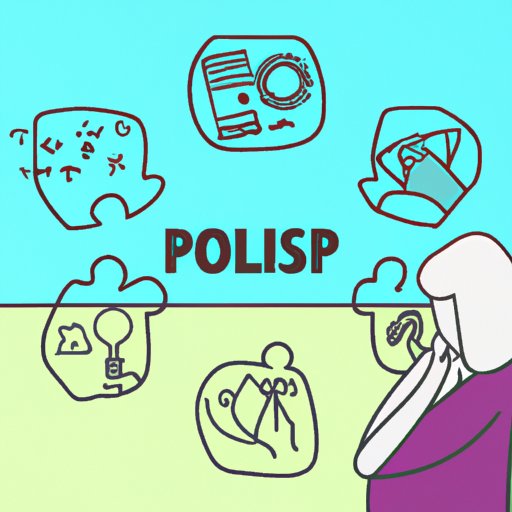Introduction
We all encounter problems in our lives, ranging from small inconveniences to larger issues that can have a more significant impact. While some of these problems can be solved quickly and easily, others require a bit more effort and thought. This is where problem-solving comes into play.
Problem-solving is the process of identifying a problem, breaking it down into manageable parts, and finding solutions that are both realistic and achievable. It involves using critical thinking skills to analyze a situation and come up with a plan of action.
Unfortunately, many people struggle with problem-solving. They may feel overwhelmed or unable to think clearly when faced with a difficult situation. There are several reasons why this may happen, including feelings of anxiety, lack of confidence, or even past experiences that have made it difficult to trust one’s own judgment.

Take a Step Back and Analyze the Problem
The first step to solving any problem is to take a step back and analyze the situation. This means taking the time to identify what the problem is and breaking it down into smaller, more manageable parts.
When trying to identify the problem, it can be helpful to ask yourself questions such as “What is causing this issue?” and “What are the possible solutions?”. This will give you a better understanding of the situation and allow you to start formulating a plan of action.
Once you’ve identified the problem, the next step is to break it down into smaller pieces. This will make it easier to find solutions that are both realistic and achievable. For example, if you’re trying to lose weight, you could break down your goal into smaller steps such as eating healthier, exercising regularly, and tracking your progress.

Set Goals and Make a Plan
Once you’ve identified the problem and broken it down into smaller parts, the next step is to set goals and make a plan. Setting realistic goals is key to success, as it gives you something to work towards and keeps you motivated. It’s also important to remember that goals should be specific, measurable, attainable, relevant, and timely (SMART).
After setting your goals, the next step is to create an action plan. This should include specific steps that you need to take in order to reach your goal. It’s important to remember that your action plan should be flexible and that you should be willing to adjust it as needed. Additionally, it’s important to set deadlines for each step in your action plan so that you stay on track.

Seek Support from Friends and Family
Seeking support from friends and family can be incredibly helpful when trying to solve problems. Having someone to talk to and share your thoughts and feelings with can be invaluable. It can also provide an outside perspective that can help you gain clarity and focus on what really matters.
Reaching out to others can also help reduce feelings of isolation and provide emotional support during difficult times. It’s important to remember that everyone needs help at some point and that asking for help is not a sign of weakness. In fact, it’s often a sign of strength.
Practice Mindfulness and Self-Compassion
Mindfulness and self-compassion are two powerful tools that can help you solve problems in life. Mindfulness is the practice of being present in the moment and observing your thoughts and feelings without judgment. This can help you gain clarity and perspective, as well as increase your self-awareness.
Self-compassion is the practice of treating yourself with kindness and understanding. It involves recognizing and accepting your flaws and mistakes, and forgiving yourself for them. Practicing self-compassion can help reduce feelings of guilt and shame, as well as increase feelings of self-worth and acceptance.
Seek Professional Help When Needed
Sometimes, the most effective way to solve a problem is to seek professional help. If you’re struggling with a mental health issue such as depression or anxiety, or if you’re dealing with a difficult situation such as a divorce or the death of a loved one, it can be beneficial to speak to a qualified therapist or counselor.
When seeking professional help, it’s important to make sure that you find a qualified practitioner who is experienced in the area that you need help with. You should also feel comfortable talking to them and confident that they can help you. Additionally, make sure to check their credentials and read reviews from other clients.
Conclusion
Solving problems in life can be challenging, but it’s possible with the right approach. Taking a step back and analyzing the problem, setting goals and making a plan, seeking support from friends and family, practicing mindfulness and self-compassion, and seeking professional help when needed are all effective strategies for problem-solving.
By following this guide, you can develop the skills necessary to identify, break down, and solve problems in your life. Remember, every problem has a solution, and by taking the time to analyze the situation and come up with a plan of action, you can make positive changes and achieve your goals.
(Note: Is this article not meeting your expectations? Do you have knowledge or insights to share? Unlock new opportunities and expand your reach by joining our authors team. Click Registration to join us and share your expertise with our readers.)
